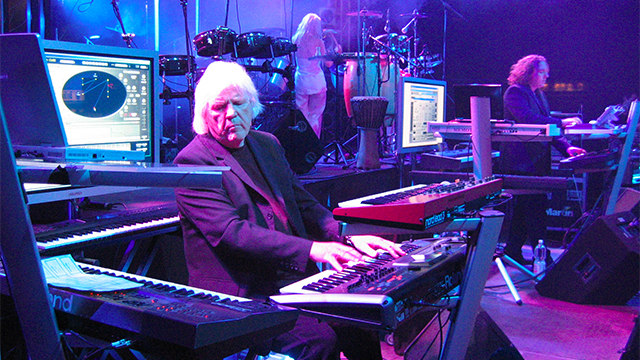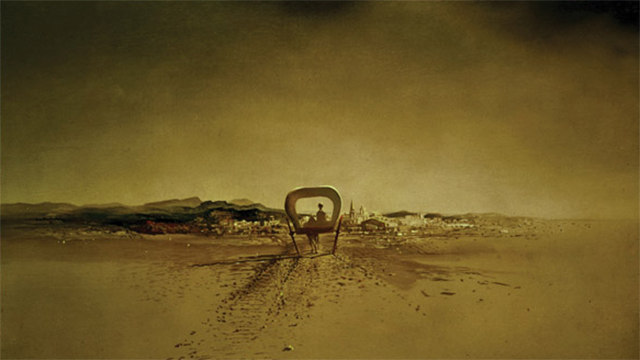Under the Influence: How Books, Movies, and Music Inspired Recent Games
We ask a handful of developers to explain how their games were inspired by material outside the world of video games.
A few weeks back, I was talking to some folks from Irrational Games when they told me that one of the biggest sources of inspiration for BioShock Infinite was Erik Larson's book The Devil in the White City. At first, I was surprised. How could a book about the Chicago World's Fair shape a video game about a fictional city in the sky? But as lead artist Shawn Robertson described it, Irrational was more interested in tapping into those themes of emerging technologies and engineering power rather than the more literal tale of Chicago's quest for escaping its status as a backwater meatpacking town. This got me thinking: how have other game creators been inspired by pieces of media--books, movies, music--outside the world of video games? To find out, I asked a few developers to answer that question in their own words.
XCOM: Enemy Unknown - Jake Solomon, Lead Designer
When it comes to XCOM, I didn't draw much inspiration from books, movies, or TV shows. Most of my external inspiration came from music. If I was ever designing a new system, I made sure to have Tangerine Dream coming out of my speakers. More than any other game, the original X-Com had a soul. It had a dark, spooky mood that really got under your skin. The music of Tangerine Dream evokes the exact same mood, and that drops me right back into 1994, hunched over my tiny 15-inch monitor playing X-Com late, late into the night. The lonely, haunting synth sounds of Tangerine Dream keep me tied to the spirit of the original game, even when I'm dreaming up new mechanics.

Tomb Raider - Darrell Gallagher, Crystal Dynamics Studio Head
There were a number of influences outside of games that we took inspiration from when making the Tomb Raider reboot. From a character perspective, Ripley from the Alien series has always been a great inspiration to us. John McClane from Die Hard is referenced as a grounded action hero, and The Descent provided inspiration for some of the darker tones in the game. The first Rambo was a classic source of survival inspiration, but probably the most significant influences were real-world stories of survival. Stories like Aron Ralston's moving tale as represented in 127 Hours, or the ordeal of the Uruguayan rugby team stranded in the Andes as portrayed in Alive. These stories captured the strength of the human spirit and a will to survive that reminded us of Lara Croft.
Bastion - Greg Kasavin, Creative Director
Bastion is one of those games that's inspired by so many different things, I can barely mention them all. There is one in particular, though, that stands out to me as being highly influential to the tone and atmosphere. When thinking about the world design at the outset of the project, we wanted to come up with something that felt different and exciting to us. We knew we were going to make an action role-playing game, but didn't want to set it in a conventional fantasy world since that's already been done well many other times.
[Cormac McCarthy's] minimal hard-edged dialogue and lush, efficient prose were great references for how we ended up handling the narration in our game.
Supergiant's studio director, Amir Rao, and I are both English majors, so we started thinking about writers with distinctive styles. That's when Cormac McCarthy's name came up. Our joke was, what if instead of being a great American author, McCarthy wrote little Diablo-style games? What would they sound like? We wanted to find out. So we chased this idea of a Western-tinged, old-time-American-feeling fantasy world, inspired in part by McCarthy's novels such as All the Pretty Horses and Blood Meridian. His minimal hard-edged dialogue and lush, efficient prose were great references for how we ended up handling the narration in our game.
BioShock Infinite - Shawn Robertson, Lead Artist
Devil in the White City was a huge inspiration to us. It's obviously a story about a serial killer during the Chicago World's Fair, but what we got out of it as a team was this age of enlightenment and how much technology was introduced at that time. I didn't even know Tesla and Edison had a rivalry where one was promoting AC and one was promoting DC! That [emerging technology] starts informing possible scenarios, things bubbling up to the surface that you want to latch onto, things for writers to start writing about or things that inspire the art team in general to start making.

Dishonored - Raphael Colantonio and Harvey Smith, Co-Creative Directors
To be honest, this is hard to answer because the biggest media influence on Dishonored was probably the video game Thief. Thief presented a dark, corrupt world full of secret factions, with its own history. Everything in the environment felt cohesively tied together in an organic way. But to the heart of your question, we would cite additional literary influences like H.P. Lovecraft, Mervyn Peake, Neil Gaiman, or Michael Moorcock. We were also guided by films like Gangs of New York and television series like Deadwood.
Mark of the Ninja - Nels Anderson, Lead Designer
Finding good inspiration for Mark of the Ninja in fiction was certainly a challenge. Unlike spy fiction (probably the closest analog to ninja), nearly all ninja fiction is, at best, an over-the-top gorefest. At worst, it's some of the corniest, campiest stuff you'll ever hope to find (for example, Miami Connection).
There is a series of Japanese films from the '60s called Shinobi no Mono, which, although obviously from the '60s, are otherwise pretty good. They tell the highly stylized story of Goemon Ishikawa, a famous ninja from Japanese history. He's something of a Robin Hood figure, but is most famous for attempting to assassinate one of Japan's greatest warlords, Toyotomi Hideyoshi. He was executed by being boiled alive after the attempt failed. Even today in Japan, large iron bathtubs are called a "Goemon bath." Coincidentally, Goemon was actually the protagonist in the SNES game Legend of the Mystical Ninja, although he was renamed "Kid Yang," and the game has nothing else to do with his life. So stories about actual ninja were probably the biggest inspiration as far as the ninja fiction actually goes. Several of the game's backstory scrolls refer to actual events and broader changes that took place in history.
Got a news tip or want to contact us directly? Email news@gamespot.com
Join the conversation